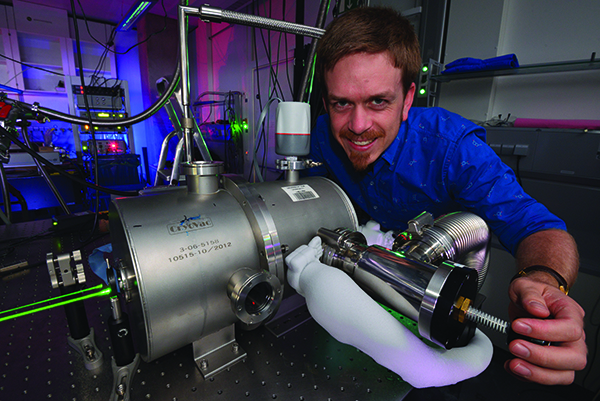Award-winning Avondale graduate discusses his scientific research—and his experience with faith
Following in the footsteps of three previous generations, Dr Lachlan Rogers began his career at Avondale. He graduated with a Bachelor of Science degree in 2005 before undertaking postgraduate studies and has completed world-first research on diamond colour centres. Rogers recently returned to Australia to work at Macquarie University, having spent the past five years in postdoctoral studies in Ulm, Germany.
How did your love for science begin?
I think my love for science began as a love of mathematics. I remember enjoying numbers and patterns from a very young age, and I was captivated by the power of mathematical concepts. Mathematical pleasure, curiosity about nature, and my fascination with tinkering all combined to produce a real passion for physics.
You recently received a Discovery Early Career Research Award (DECRA) from the Australian Research Council. Congratulations! What will you be focusing on for your research project?
DECRA is a three-year fellowship with $120,000 in research funds and supports early-career researchers. My project involves the tiny glowing artificial atoms in coloured diamonds that can be used to receive, store and send information in a network using laser light and microwaves. In particular, my project will develop a novel artificial atom in diamond that is better at connecting to other nodes in a network.
You were the first person to measure the dark decay channel in diamonds leading to spin polarisation. What does this mean for the scientific community?
The glowing artificial atoms in diamond enable the manipulation and read-out of individual electrons’ quantum states. Generations of physicists have dreamed of this ability, and it opens a new window into nature. There are wide-ranging potential applications in quantum-computing, secure cryptography and biomedical sensing/imaging—but before these can be developed, it is vital to understand the building blocks. My discovery of the mechanism for spin polarisation was an important step in this journey.
What challenges or opportunities have you experienced as a Christian working in scientific fields?
At heart, religious traditions—including Christianity—and scientific activity are all trying to seek truth and make sense of life and the universe we inhabit. Science tells us how things work and religions help us discover what they mean. Learning how nature works does not diminish God’s awe, it deepens it. It seems to me that there should be far greater collaboration between these efforts rather than the guarded distrust I often sense Christians have for “science.” My scientific work has provided the opportunity to work with a wide variety of people. In Germany, I worked with colleagues who fasted during Ramadan, brought traditional Russian Orthodox Easter cakes to share, ate kosher, and left the lab every Friday to attend prayers at the city mosque. These cultural and religious differences were mutually respected, and collectively our scientific curiosity produced an atmosphere of learning from each other’s perspective on the world—although I realise this is probably not normal!
What’s left on your scientific bucket list?
I came close to visiting Antarctica for a research project, but it didn’t work out. I’d love to get there one day.
Share

